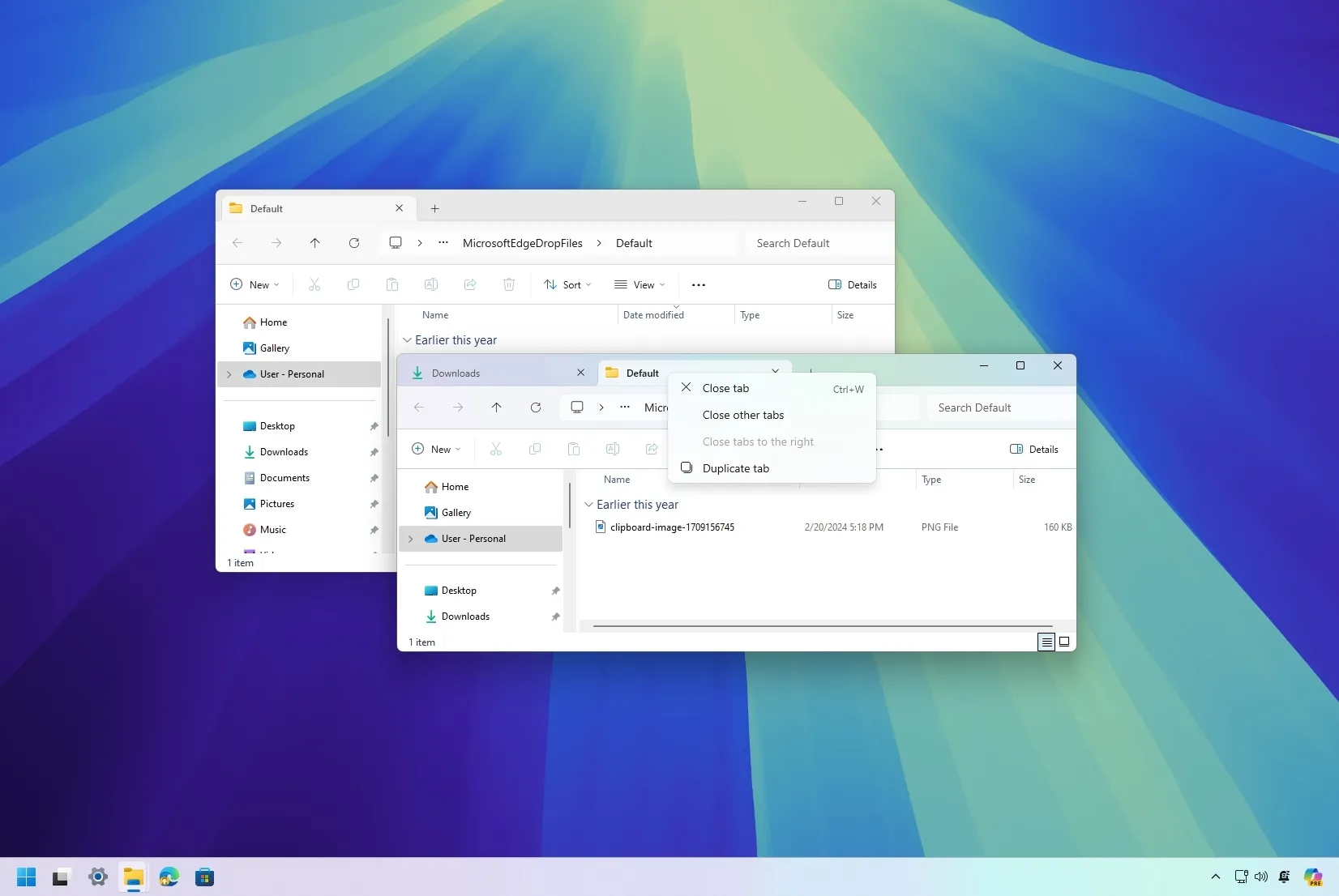How to manage tabs on File Explorer for Windows 11

- To use tabs on File Explorer, use “Ctrl + T” to create or “Ctrl + W” to close tabs and “Ctrl + Tab” (or Ctrl + number) to cycle through.
- You can also right-click a tab to access the context menu, close or duplicate tabs, and you can drag tabs in and out of the window.
On Windows 11, File Explorer has tabs that allow you to open multiple folders or drive locations within a single window, similar to how you use tabs in a web browser. This feature helps you organize your work, reduce clutter on your desktop, and improve your overall productivity.
Some of the key benefits of tabs include the ability to open and manage multiple folders simultaneously without having to open separate instances of File Explorer. Grouping related files and folders together can also keep your workspace organized and focused. You can quickly switch between locations or projects without losing context. Finally, the familiar tabbed interface makes navigating and managing your files easy.
In this guide, I will teach you the easy steps to get started with tabs on File Explorer for Windows 11.
How to use tabs on File Explorer
Tabs should be enabled automatically on Windows 11 22H2 and higher releases. If not, you can use these steps to enable the feature on your computer.
Create new tabs
To create a new tab on File Explorer for Windows 11, use these steps:
-
Click the “new tab” button next to the current tab.
-
Click the middle button of the mouse while hovering over a folder.
-
Right-click a folder and select the “Open in new tab” option.

-
Use the “Ctrl + T” keyboard shortcut.
You can also use the right-click and middle button options to open locations from the left navigation bar.
You can also use the “Ctrl + N” keyboard shortcut, but the action is the same as the “Windows key + E” action, which opens a new instance of File Explorer.
Close open tabs
To close tabs on File Explorer, use these steps:
-
Click the Close (X) button in the tab.

-
Click the middle button of the mouse while hovering over the tab.
-
Right-click the tab and select the “Close tab” option.

-
Right-click the tab and select the “Close other tabs” option to close all the tabs except the one you right-clicked on.
-
Right-click the tab and select the “Close tabs to the right” option to close those tabs on the right, leaving those tabs on the left open.
-
Use the “Ctrl + W” keyboard shortcut to close the current tab.
If you want to close all the tabs at the same time, click the Close (X) button on File Explorer.
Browse open tabs
On File Explorer, you can navigate open tabs using these actions:
-
Drag a tab left or right to change its position.

-
Use the “Ctrl + Tab” keyboard shortcut to cycle through the open tabs.
-
Use the “Ctrl + number” keyboard shortcut to jump to the tab position. For example, pressing “Ctrl + 3” will jump to the tab in the third position, and “Ctrl + 1” will jump back to the first tab.
-
If you have multiple tabs open, use the left and right buttons to scroll forward and backward through the tabs.

-
If you want to copy a file between folders, drag the file over the new tab and drop it in the new location. If you drag the file with the right-click, you will get the context menu with the options to copy or move the file.

Quick tip: If the location to move the file is within the path, you can drag and drop the file within the breadcrumb in the File Explorer address bar.
File Explorer doesn’t have the option to disable tabs, but if you want the traditional experience, you may still be able to turn off the feature using this workaround.
Duplicate tab
To duplicate a tab on File Explorer, use these steps:
-
Right-click any tab and choose the “Duplicate tab” option.

Drag tabs out to open a new window
To open a new window from a tab on File Explorer, use these steps:
-
Click and drag a tab out of the window and drop it.

-
Click and drag another tab and drop into another tab to switch windows.

-
Click, drag, and drop the tab into another tab to group them together.
These actions will separate a tab from a window and group them together in the same window again.
Windows 11 doesn’t limit the number of tabs you can open in File Explorer. If the application can’t show more tabs, the overflow buttons will appear on the right and left to move between tabs.
Update August 21, 2024: This guide has been updated to ensure accuracy and reflect changes to the process.
Source link




